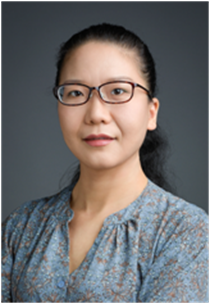Lingyan Liang
TFTs for Display
Laboratory of Advanced Nano Materials and Devices, Ningbo Institute of Materials Technology and Engineering, CAS, 315201, Ningbo, China
Email: lly@nimte.ac.cn
Biography
|
Lingyan Liang received her BS in physics in 2003 from Nanjing University and her MS/Ph.D degree in 2008 in Material Physics & Chemistry from Institute of Semiconductor, Chinese Academy of Sciences(CAS). She is currently an associate professor at Ningbo Institute of Material Technology and Engineering, CAS. Her current research focuses on amorphous and nano-crystalline oxide semiconductors and their devices for electronics/optoelectronics/bioelectronics. |
Abstract for Presentation
Al-induced microstructure regularization toward high-mobility oxide thin-film transistors
Amorphous oxide semiconductor (AOS) such has gradually replaced traditional channel materials of thin film transistors (TFTs) used in flat panel display. However, the field effect mobility (μFE) of commercial IGZO TFTs (~10 cm2/Vs) cannot meet the requirement for ultra-high resolution and high frame rate novel display[1]. In this work, High μFE InSnZnO TFTs were prepared through “Al-induced microstructure regularization (AIMR)” at an annealing temperature lower to 400 ℃[2]. Spherical crystalline particles are distributed throughout the back channel near the Al layer, while an amorphous phase still represents the front channel but with enhanced microstructure ordering. Especially, the packing density is distinctly increased, and oxygen vacancies are largely reduced. The optimized TFT exhibits excellent performance with a steep sub-threshold swing of 0.18V/dec, a threshold voltage of -0.21V, and a small threshold voltage shift of -0.24V under negative bias stress (-20V, 3600 s), especially a remarkable μFE boosted to 53.2 cm2/Vs compared to 19.1 cm2/Vs for the TFT without the Al layer. The AIMR method is also applied some other oxide TFTs, with the average μFE increasing by 2~3 times.
References
[1] Z. D. Wu, H. B. Zhang, X. L. Wang, W. S. Zhou, L. Y. Liang, Y. W. Cao, and H. T. Cao, IEEE Electron Device Lett. 42(4), 529 (2021).
[2] X. L. Wang, L. Y. Liang, H. B. Zhang, H. J. Wu, W. F. Li, C. Ning, G. C. Yuan, and H. T. Cao, Appl. Phys. Lett. 119 (21) (2021).
WELCOME TO CHINA TO ATTEND THE ICANS
23-26 August, Nanjing, China
Connect with us:



